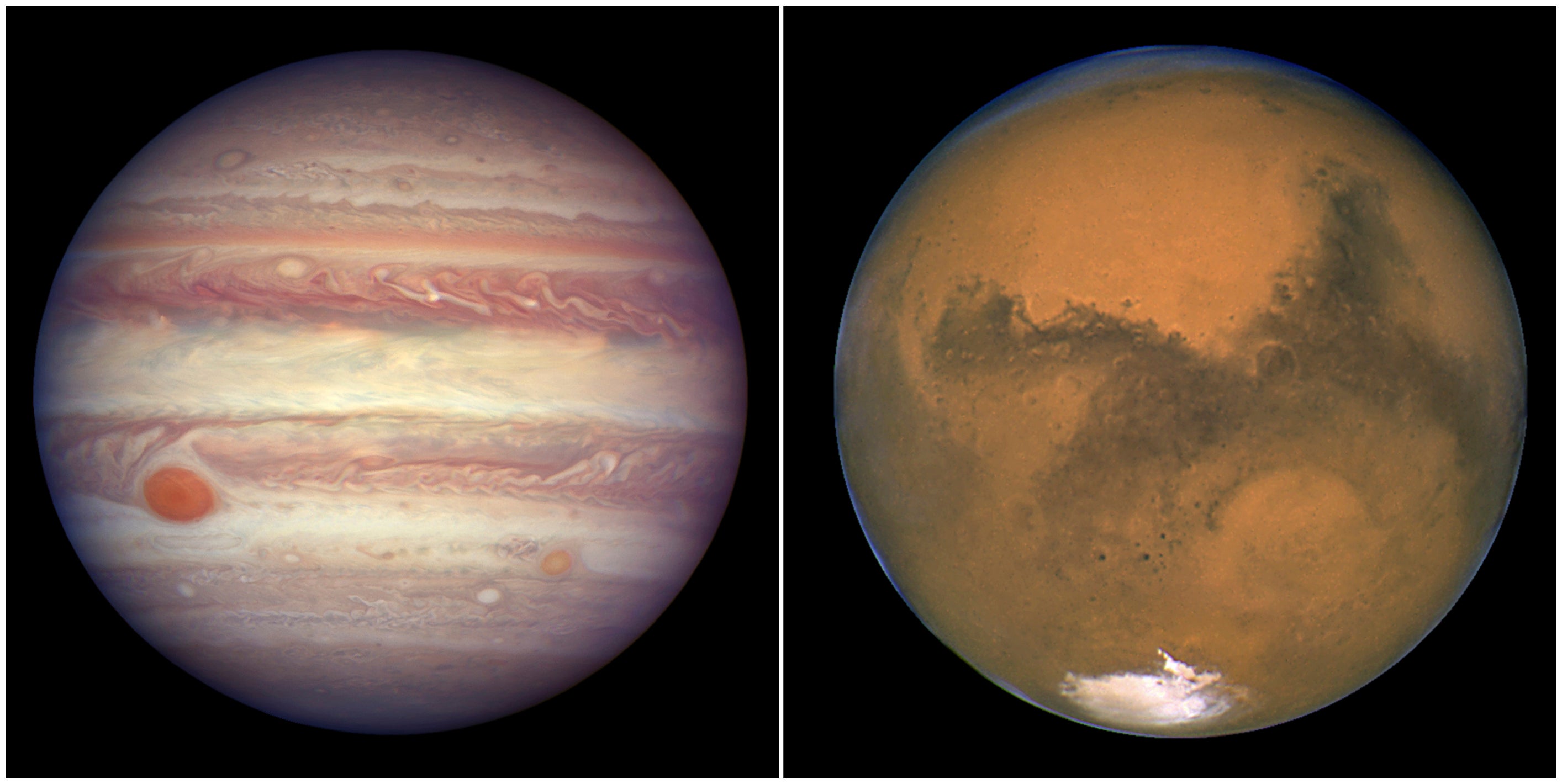Mars and Jupiter get chummy in the night sky. The planets won't get this close again until 2033
Mars and Jupiter are cozying up in the night sky for their closest rendezvous this decade

Your support helps us to tell the story
From reproductive rights to climate change to Big Tech, The Independent is on the ground when the story is developing. Whether it's investigating the financials of Elon Musk's pro-Trump PAC or producing our latest documentary, 'The A Word', which shines a light on the American women fighting for reproductive rights, we know how important it is to parse out the facts from the messaging.
At such a critical moment in US history, we need reporters on the ground. Your donation allows us to keep sending journalists to speak to both sides of the story.
The Independent is trusted by Americans across the entire political spectrum. And unlike many other quality news outlets, we choose not to lock Americans out of our reporting and analysis with paywalls. We believe quality journalism should be available to everyone, paid for by those who can afford it.
Your support makes all the difference.Mars and Jupiter are cozying up in the night sky for their closest rendezvous this decade.
They’ll be so close Wednesday, at least from our perspective, that just a sliver of moon could fit between them. In reality, our solar system’s biggest planet and its dimmer, reddish neighbor will be more than 350 million miles (575 million kilometers) apart in their respective orbits.
The two planets will reach their minimum separation — one-third of 1 degree or about one-third the width of the moon — during daylight hours Wednesday in most of the Americas, Europe and Africa. But they won’t appear that much different hours or even a day earlier when the sky is dark, said Jon Giorgini of NASA’s Jet Propulsion Laboratory in California.
The best views will be in the eastern sky, toward constellation Taurus, before daybreak. Known as planetary conjunctions, these comic pairings happen only every three years or so.
"Such events are mostly items of curiosity and beauty for those watching the sky, wondering what the two bright objects so close together might be," he said in an email. “The science is in the ability to accurately predict the events years in advance.”
Their orbits haven’t brought them this close together, one behind the other, since 2018. And it won’t happen again until 2033, when they’ll get even chummier.
The closest in the past 1,000 years was in 1761, when Mars and Jupiter appeared to the naked eye as a single bright object, according to Giorgini. Looking ahead, the year 2348 will be almost as close.
This latest link up of Mars and Jupiter coincides with the Perseid meteor shower, one of the year's brightest showers. No binoculars or telescopes are needed.
___
The Associated Press Health and Science Department receives support from the Howard Hughes Medical Institute’s Science and Educational Media Group. The AP is solely responsible for all content.